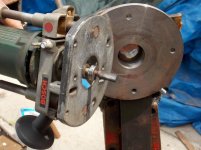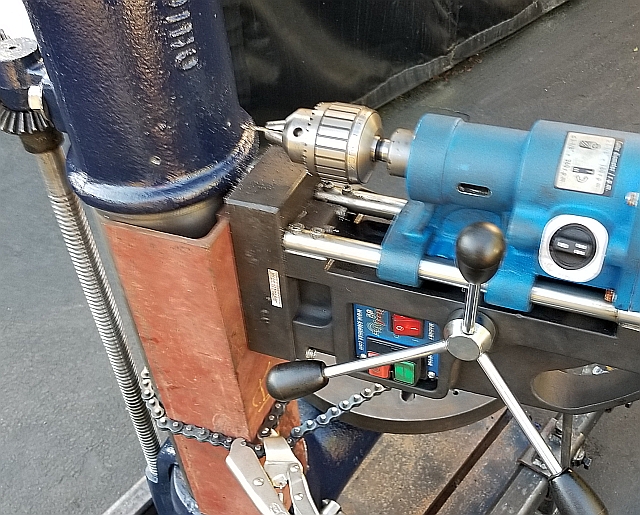NFS_87
Plastic
- Joined
- Jan 29, 2016
Have a repair to make in cast iron (fortunately) 6 threaded holes need repaired, drilled out and tapped to accept thread repair inserts. Original thread size is 1"-8, the inserts will require a 1-3/8-12 thread. Holes are in a horizontal orientation and due to the size, the part is not moving. I.E. The machining will have to be done in place.
It started out as one of those, just drill out the holes, helicoil them and be done. But then the reality hits.
My first thought is a mag-drill with an annular cutter, but I'm having a hard time coming up with one in the tap drill size for 1-3/8-12. Next thought was drilling undersize with an annular cutter and then single point boring to final tap drill size, but I'm not sure how well an unsupported mag-drill would do in that scenario. Holes are blind, can't line bore to size.
Only other thought is to rig a Bridgeport head on some kind of rigid stand and use it as a 'horizontal drill press'.
Tapping will be done by hand, I'm not concerned about that part.
Would prefer not to drill by hand just due to the hole size and enlarging an existing hole, I'll need my wrists for the tapping.
Also, I'm not looking to break the bank on this, couple hundred dollars (I can come up with a mag-drill or Bridgeport head) for tooling max.
Thoughts?
It started out as one of those, just drill out the holes, helicoil them and be done. But then the reality hits.
My first thought is a mag-drill with an annular cutter, but I'm having a hard time coming up with one in the tap drill size for 1-3/8-12. Next thought was drilling undersize with an annular cutter and then single point boring to final tap drill size, but I'm not sure how well an unsupported mag-drill would do in that scenario. Holes are blind, can't line bore to size.
Only other thought is to rig a Bridgeport head on some kind of rigid stand and use it as a 'horizontal drill press'.
Tapping will be done by hand, I'm not concerned about that part.
Would prefer not to drill by hand just due to the hole size and enlarging an existing hole, I'll need my wrists for the tapping.
Also, I'm not looking to break the bank on this, couple hundred dollars (I can come up with a mag-drill or Bridgeport head) for tooling max.
Thoughts?







